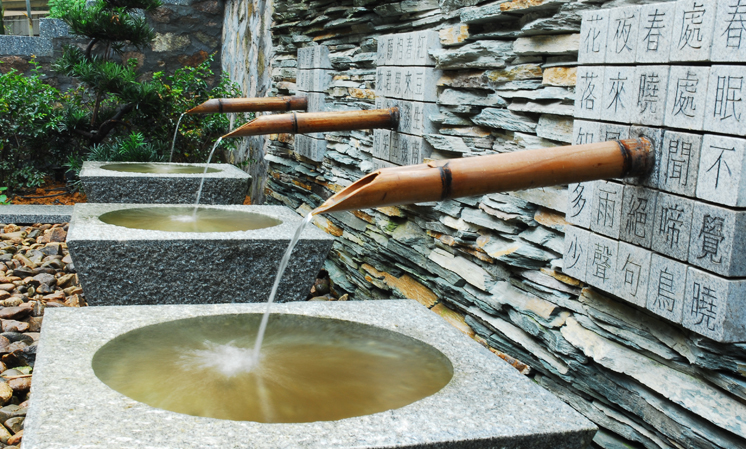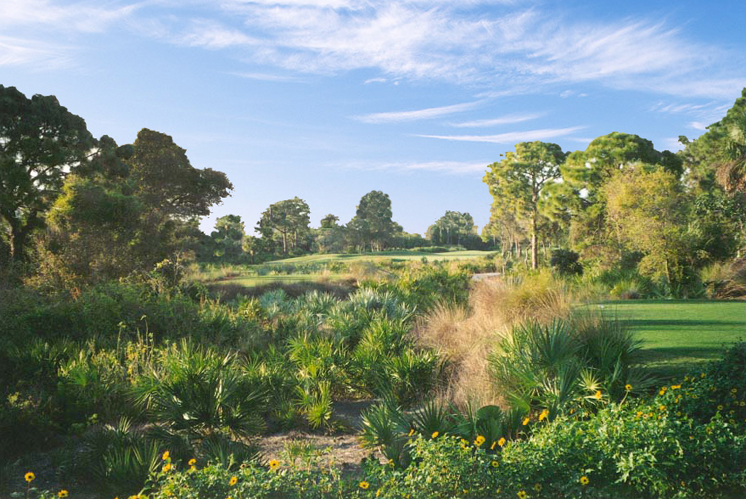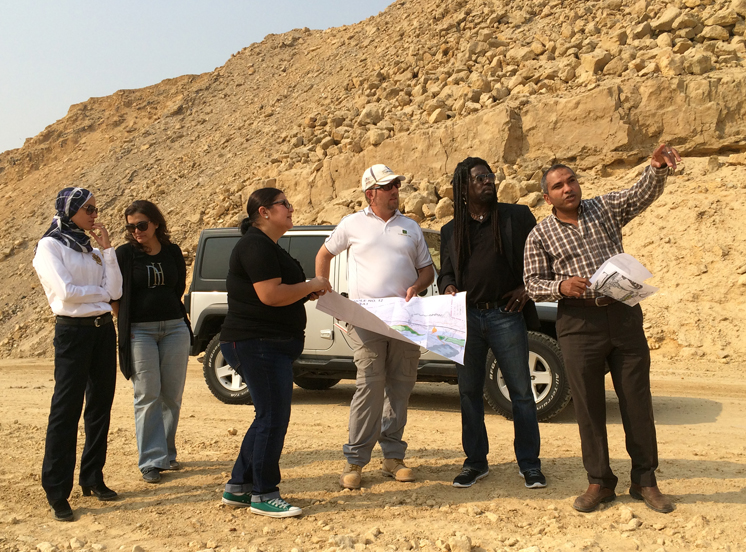News
Interview with Kona Gray, ASLA
 Kona Gray, ASLA / EDSA
Kona Gray, ASLA / EDSA
EDSA has designed many high-end hotels and resorts around the world. Many of these new hotels and resorts are found on beach fronts. For example, the Ritz Carlton Fort Lauderdale in Florida is located just a few hundred feet from the Atlantic coast. With recent estimates showing that climate change will cause sea levels to rise 6 to 15 feet by 2100, what do you see as the future for beach front amenities? How is EDSA helping these places adapt for a changing future?
For EDSA, it begins in the planning stages. A conscious assessment and understanding of the carrying capacity of a place is an essential precursor to the design of a parcel. In the case of coastal developments, like the Ritz Carlton Fort Lauderdale, this means respecting and protecting the site's natural systems.
With innovative design and strategic solutions, we seek to continually improve the resilience of each development project we have been honored to steward. At the same time, we have a dialogue with developers and government entities to ensure protection of the existing shoreline, beach access, and related resort venues.
One great example of protective planning measures can be found through the enhancement and preservation of coastal dunes, whose natural placement protects coastal areas more effectively than any man-made measure. Similarly, ESDA supports the protection of coral reef, wetlands, and mangrove restoration, and establishing beach setbacks based on erosion trends and encouraging landward retreat of existing structures from dynamic shorelines. These measures assist developers to maximize their investment, while protecting the natural beauty with which visitors and residents interact.
If the industry disregards nature’s capacity, then we will certainly face many challenges in the years to come. However, it is our aim to ensure the vitality of beach front amenities.
EDSA has also designed a number of eco-resorts. What is the attraction?
Eco-resorts attract those who want to engage in an environment that is intricately tied to the culture, people, and region where it resides. Boutique eco-resorts are authentically contextual, sustainable, respectful, and celebratory of their natural surroundings. Meanwhile, larger hotel brands are now attempting to mimic this sustainable ideology. They're catching up quickly.
They're going to places where they haven't gone before because they realize there's now a market for eco-resorts and long-term benefits to the implementation of green development measures. From bigger initial site assessments to smaller scale responsibility measures like maintenance adjustments, recycling, and amenity re-positioning, the tourism industry is really flipping the old paradigm of "build first, measure impact later" on its head.
What we've learned from our experiences is that we need to advocate for nature’s preservation by introducing these eco-friendly principles to all projects in which we are involved.
Can you talk a bit more about those guidelines? Some have expressed concerns about whether an eco-resort can truly be environmental and minimize impacts on the natural environment. For example, some eco-resorts are challenging to get to, so there's a lot of energy spent to travel to these places. How do you balance appreciation for nature, but also access to it?
It's a challenge. I mean, essentially, many eco-resorts are remote by nature. We have been involved in some in the middle of deserts. There are others that are on secluded tropical islands, and it takes time and energy to get there.
What we have learned is it's important to balance energy spent. When you arrive, you should not be using anything detrimental to the environment. Whether it's through the use of bicycles, public shuttles, electric vehicles or ride sharing, and improving overall walkability as a part of an overall vacation package, it's very important to leave as little impact on the environment as possible.
 ASLA 2010 Professional General Design Honor Award. Crosswater's Ecolodge, Nankun Mountain Reserve, Guandong, China / EDSA
ASLA 2010 Professional General Design Honor Award. Crosswater's Ecolodge, Nankun Mountain Reserve, Guandong, China / EDSA
 ASLA 2010 Professional General Design Honor Award. Crosswater's Ecolodge, Nankun Mountain Preserve Guandong, China / EDSA
ASLA 2010 Professional General Design Honor Award. Crosswater's Ecolodge, Nankun Mountain Preserve Guandong, China / EDSA
The most successful eco-resorts net out at zero. They give back to the grid. Many times they are fully self-sufficient, so, they're not depleting any resources.
EDSA has also planned and designed many golf courses. How can you minimize the impact of them on the environment? In developing countries, more and more people want to play golf. In China, for example, golf is booming. How do you get a Chinese golf course developer to avoid some of the errors we've made?
Golf is global. The Masters Series and USGA are actively engaging the global market, as all major tournaments now seek international players to join their ranks. Golf is now part of the Olympics.
Ask anyone who is a golfer—and I am—and you will find that this sport is growing and evolving with the changing ideals of consumers. As demographics, eco-awareness, and financial value propositions change, adjustments to the traditional golf amenity are explored. This is a phenomenon that's not going to go away.
Golf has always been an international sport. Scotland’s St. Andrews Golf Course is the prototype of the game, as we know it today. It has outstanding beauty and sensibility of the natural environment.
While golf is often considered an elite sport, I have been impressed by the First Tee program that welcomes inner-city children and others alike to get involved in the game at an early age.
From an environmental perspective, golf is challenging. Consumption of golf is dynamic. Golf takes up a lot of land, and there are a lot of things done to golf courses to keep them green, as we know. Some courses are not as environmental as they should be, but the golf course industry is already at the cutting-edge of sustainability efforts with innovations in resource management increasing at a rapid pace.
The Collier's Reserve, outside of Naples, Florida, one of our early golf course communities, is an Audubon course, so they're using all the proper techniques to make sure no pesticides that are detrimental to the environment. But the other thing we learned from that course is the open space created is so valuable. Not only is it used for golf, it's also a wildlife corridor. When we began our master plan, we mapped the way the fauna and flora worked throughout the region and kept those corridors open and tied them together.
 Collier's Reserve / EDSA
Collier's Reserve / EDSA
From a real estate perspective, golf is important for maximizing residential properties, creating an identity of manicured beauty, a brand of exclusivity, and a fabric for social connectivity. However, much of the world has been over-golfed. There are many courses that are now being turned into parks. We've also seen a lot of golf courses reduced from eighteen holes to nine holes.
This is happening because golf doesn't typically make money. It's an extremely expensive venture. It's difficult to pay for that with a club membership unless you have a very expensive club. In an effort to capitalize on these evolving inclinations and pull in a more diverse range of individuals, golf facilities are starting to make some much needed changes.
Some of these new trends in the evolution of golf include: shorter courses so people spend less time out on the green, advanced practice facilities, chipping greens, and putting ranges that are accessible to the entire family – in addition to new kinds of nature-based obstacles and driving ranges. You can enjoy the sport without taking the time or the land required for traditional courses.
EDSA and your studio there in particular have a global focus. How do you ensure your projects have maintained that local feel? How does your firm fully involve the local community in design and development?
EDSA is an international design firm. We've learned over the years that it's so important to entrench yourself in the local context, so we make it a part of our culture to get fully educated about where we're going. We'll read travel magazines, Lonely Planet, international news, and review travel websites, so we understand the customs and cultures that relate to the places where we're going to be. We are fortunate enough to have many people from around the world working at our firm, and so they bring with them that local connection that allows us to focus on what's important on the ground.
And, once we're there, we make it a point to work with many local consultants. We don’t go anywhere unless there is a local consultant to assist us. That's part of our process. Working with them, we learn a lot—about ourselves and the local culture. All the while, we're working closely with constituents and stakeholders who are going to be involved in the process so we're designing what they need.
And you also have a global perspective yourself, given you are from Liberia in Western Africa. What do you think American landscape architects can learn from West African landscape architects, and vice versa?
Being global means understanding the world. We are so fortunate to be able to work in all sorts of amazing places. What we know about landscape architecture in the West is important, but it's not everything. It's important to tap into local culture and expertise and learn from the people you're working with.
Our good friend, Hitesh Mehta, FASLA, who is from Kenya, worked closely with us on developing guidelines for eco-resorts and sustainability while employed by EDSA. Many of the projects we worked on together were large-scale planning developments dealing with game reserves or eco-resorts; our teams were always fully integrated with local team members.
 Working with local consultants / EDSA
Working with local consultants / EDSA
At the onset of each project, our design charrettes involve a “six senses” process in which we spend time on the ground understanding how things work. The only way to affect the environment in a positive way is to learn from the people there and collaborate with them. It's very straightforward. It's very important to not bring something foreign to an environment and try to make it work in the way it would work in the West.
At the ASLA annual meeting in New Orleans, you said, "Landscape architecture in the United States is currently facing a crisis of diversity. African Americans and Latinos together capture less than 10 percent of graduating landscape architects. These demographics fail to reflect that of the wider U.S. population. U.S. census data projects that minorities, now 37 percent of the U.S. population, will constitute 57 percent by 2060." What is the single most important thing landscape architecture firms should do to increase diversity? What should educators do? And what should ASLA, LAF, TCLF, our primary supporting organizations, do?
It is our duty to reflect the people we are serving. Firms in our country have a responsibility. They have a responsibility to reflect their clients, they have a responsibility to the environment, and they have a responsibility to humanity. We think it's important for firms to lead the way and not only conduct outreach but to get heavily involved in all the things related to diversity.
Mark Rios, FASLA, a principal at Rios Clementi Hale Studios, was on our general session panel “Designing for Diversity/Diversity in Design.” His firm is a very good example of how this can be done. His staff is curated, as he said. There are people from all parts of the world, essentially reflecting his client base. That makes business sense.
For educators, this means seeking diverse recruitment. Things have changed, but the needle hasn't moved that far. Educators need to go to the next level to recruit people from all minority groups.
We have a niche to fill. We have missed an audience that wants to be heard. We need to speak to elementary, middle, and high school students, and follow them all the way through their career path to get them into landscape architecture. If that works for minorities, it's going to work for everyone.
ASLA, TCLF, the Landscape Architecture Foundation, and CELA also have a major responsibility here to influence and build a diverse community. ASLA has led the way in this by encouraging the President's Council to sign a Memorandum focused on expanding diversity within its ranks. Recruitment for top talent is key. A major player is CLARB as they focus on licensure to increase representation from minorities.
It's an exciting time for the robust field to spread its reach. We are confident that a diverse voice will bring about great ideas.
You said EDSA is one of the most diverse landscape architecture firms and provides a lot of opportunity for emerging professionals. What about your firm culture enables this? How much further does EDSA need to go?
At EDSA we have fostered an atmosphere that welcomes an ever-growing diversity within our teams. Because of continued outreach to raise awareness about the field of landscape architecture in schools, among young professional groups, and within the overarching development industry, we have been able to attract people from all over the world and increase our pool of diverse applicants. We've found that the effort needs to be intentional. We need to reach out and actually physically grab people and bring them into the fold. It’s our goal to steward this diverse talent pool and support its expansion.
 Diversity at EDSA / EDSA
Diversity at EDSA / EDSA
It's a great responsibility to cultivate a thriving field in landscape architecture where men and women forge the path together, where all groups, regardless of race, religion, or ethnic background are welcomed into the diverse tapestry of our company culture. This is what makes EDSA a unique, and important player in the global industry of landscape architecture.
Kona Gray, PLA, ASLA, is principal at EDSA in Ft. Lauderdale, Florida, and immediate past-president of the board of the Landscape Architecture Foundation (LAF). Interview conducted by Jared Green at the ASLA 2016 Annual Meeting in New Orleans.